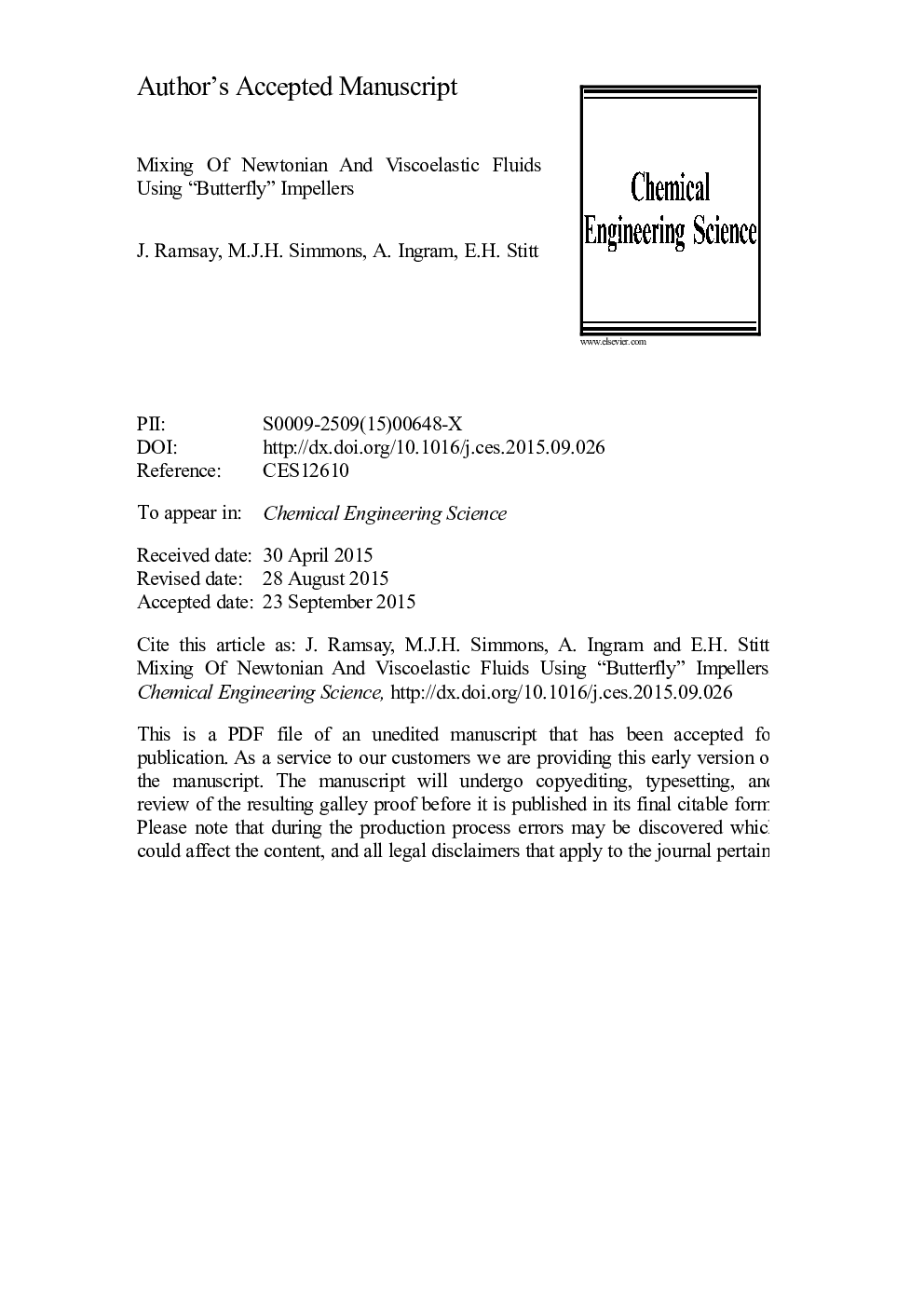| Article ID | Journal | Published Year | Pages | File Type |
|---|---|---|---|---|
| 6589359 | Chemical Engineering Science | 2016 | 45 Pages |
Abstract
The mixing of high viscosity and viscoelastic fluids may be performed in industry using a “butterfly” impeller, which has received scant attention. This paper describes the characterisation of these impellers using both Newtonian and viscoelastic (Boger) fluids with an identical base viscosity under laminar flow conditions in batch tanks without baffles. Measurements are made using two rotational speeds (N=30 or 60Â rpm) over a wide range of impeller to tank diameter ratios from 0.53 to 0.98. Particle Image Velocimetry (PIV) and Planar Laser Induced Fluorescence (PLIF) have been used to determine local velocity fields, shear rates, flow numbers and mixing times, with impeller power number Po obtained from torque measurements. A down-pumping flow pattern is observed, with maximum normalised velocities of 25% of the impeller tip speed observed in the axial plane, increasing to 60% in the rotational plane due to solid body rotation. Angle resolved measurements found these to be slightly increased as the impeller passes the image plane, with viscoelastic fluids displaying a greater uniformity of velocity across the image planes due to elastic energy storage. Maximum shear rates are greatest between the impeller and the wall, yet remain low i.e. O(10)Â sâ1. Mixing times obtained from PLIF show that mixing times in viscoelastic fluids show a slight reduction compared to the Newtonian equivalent. The impeller power number was determined as Po=0.6 in the turbulent regime, while the laminar constant Kp and the Metzner-Otto constant ks were equal to 122 and 16.0 respectively.
Related Topics
Physical Sciences and Engineering
Chemical Engineering
Chemical Engineering (General)
Authors
J. Ramsay, M.J.H. Simmons, A. Ingram, E.H. Stitt,
